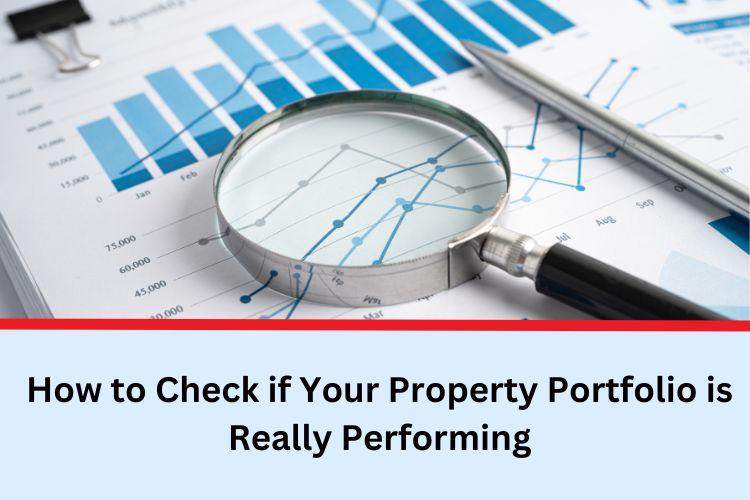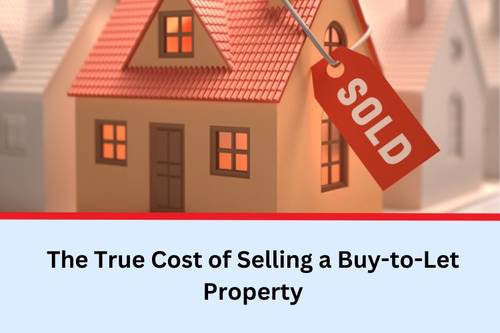Owning rental properties can feel like a success when the rent rolls in each month. But is your portfolio actually delivering the returns you expected?
Many landlords only focus on whether their tenants are paying on time. That’s important, of course, but it doesn’t give the full picture. What if maintenance costs are eating into your profits? What if void periods are dragging down your yields?
If you don’t track key performance metrics, you might be missing warning signs, or worse, leaving money on the table.
So, how do you check if your portfolio is really performing? Let’s break it down.
Net Yield & Cash Flow: Are You Actually Making Money?
Many landlords check their gross rental yield, a quick calculation that looks at rental income vs. property value. But that doesn’t tell you how much profit you’re making.
How to calculate Net Yield:
- Add up your total annual rental income.
- Subtract your annual expenses (mortgage, insurance, maintenance, service charges, management fees, etc.).
- Divide by the property value and multiply by 100 to get a percentage.
Example:
- Rental income: £12,000 per year
- Expenses (mortgage, maintenance, fees, etc.): £4,000 per year
- Property value: £200,000
(£12,000 - £4,000) ÷ £200,000 × 100 = 4% Net Yield
Why it matters:
A declining net yield could mean your costs are rising faster than your income. Are you paying too much for management? Do you need to review suppliers or refinance your mortgage? If your net yield is too low, it may be time to rethink your investment strategy.
Void Periods: How Much Income Are You Losing?
An empty property isn’t just a frustration, it’s lost income. Even if you fill most of your tenancy gaps quickly, a few weeks of voids each year add up.
How to calculate Void Rate:
- Count the number of empty months over the past year.
- Divide by 12 to get a percentage.
Example:
If your property was empty for 1.5 months last year:
1.5 ÷ 12 × 100 = 12.5% Void Rate
Why it matters:
A high void rate suggests pricing, marketing, or tenant retention issues. If your competitors are fully occupied while your property sits empty, could you adjust the rent or upgrade the property to attract tenants faster?
Capital Growth & Equity: Is Your Investment Gaining Value?
Rental income is important, but long-term wealth in property investing often comes from capital growth.
How to check:
- Look at recent sales prices for similar properties in your area (use Rightmove, Zoopla, HM Land Registry).
- Compare this to your original purchase price.
- Subtract any outstanding mortgage balance to calculate your equity.
Example:
- You bought a property for £200,000 five years ago.
- Similar properties are now selling for £250,000.
- Your mortgage balance is £140,000.
Your equity = £250,000 - £140,000 = £110,000
Why it matters:
If your equity has increased, you might be able to remortgage and release funds for your next investment. On the flip side, if growth is slow, it might make sense to refocus on cash flow rather than appreciation.
Maintenance & Unexpected Costs: Are Repairs Eating Your Profits?
Some maintenance costs are normal, but if they’re rising every year, your profit margin is shrinking.
How to check:
- Add up your repair & maintenance costs over the past year.
- Compare it as a percentage of rental income.
Example:
- Rental income: £12,000 per year
- Maintenance & repairs: £1,800 per year
£1,800 ÷ £12,000 × 100 = 15% of income spent on repairs
Why it matters:
Spending more than 10-15% of rental income on repairs could mean:
- The property is aging and needs a major refurb.
- Your contractors are overcharging, time to compare prices.
- A bigger maintenance issue is looming.
If costs are high, could you refinance and invest in upgrades to reduce long-term maintenance?
Tenant Trends: Are They Staying or Leaving?
High tenant turnover means higher costs, every new tenancy involves marketing, admin, referencing fees, and potential voids.
How to check:
- Look at how long your tenants typically stay before moving out.
- Are you replacing tenants every 6–12 months?
Why it matters:
- Long-term tenants means lower costs and more stable income.
- If tenants leave quickly, check for patterns, is it pricing, property condition, or competition?
If a competing property has better features for the same price, you might need to make updates to stay competitive.
Mortgage & Financing: Are You on the Best Deal?
With interest rates shifting, landlords should regularly review their mortgage terms.
What to check:
- Interest rate – Could you refinance at a better rate?
- Loan-to-Value (LTV) – Has property appreciation improved your LTV position?
- Stress test – If rates rise, will the property still be profitable?
Why it matters:
A simple remortgage could save thousands per year, boosting your cash flow and net yield.
How to Track All This (Without Spreadsheets & Headaches)
Tracking these key numbers manually is possible, but let’s be honest, it’s a hassle. You could dig through bank statements, build a spreadsheet, and run the numbers every month…
Or, you could let PaTMa do it for you.
With PaTMa Property Manager, you can:
- Automatically track yields, cash flow, and expenses.
- Monitor void periods and tenant turnover.
- Get an instant view of your portfolio performance in one place.
Try PaTMa Property Manager for free today
Checking your portfolio’s performance doesn’t have to be complicated, but it does need to be done if you want to grow your investment. If you’re not keeping an eye on these key metrics, you might be losing money without realising it.


